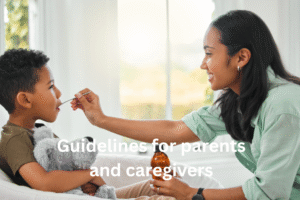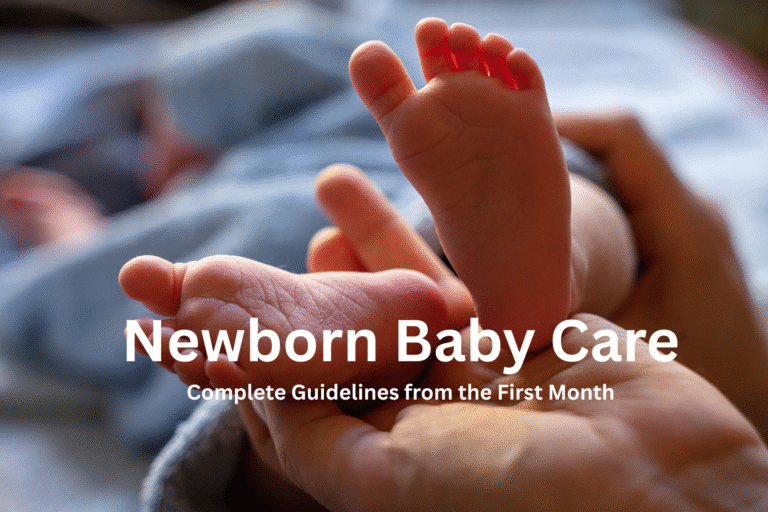Method of Giving Medicine to Children: Administering medicine to children can be one of the most challenging tasks for parents and caregivers. Unlike adults, children often resist taking medicine due to its taste, texture, or fear. Therefore, understanding the appropriate methods of giving medicine to children is essential for ensuring effective treatment and promoting health. In this comprehensive article, we will explore various techniques, age-appropriate approaches, safety tips, and practical tools that make medicine administration smoother and stress-free.
Why Children Resist Medicine
Before diving into the methods, it’s important to understand why children resist taking medicine:
- Unpleasant taste or smell
- Fear of swallowing pills
- Lack of understanding
- Bad past experiences
- Unfamiliar tools (syringes, droppers, etc.)
By identifying the root causes, parents can choose the most suitable method to overcome the child’s resistance.

Age-Appropriate Methods of Giving Medicine to Children
| Age Group | Recommended Forms | Methods |
| 0-12 months | Liquid drops or oral syrups | Use oral syringe or dropper; aim inside the cheek to prevent gagging |
| 1-3 years | Flavored liquids, chewable tablets | Mix with small amounts of food; offer small rewards |
| 4-6 years | Chewable or dissolvable tablets | Encourage self-administration under supervision; use a pill crusher if allowed |
| 7+ years | Pills, capsules, chewables | Teach pill-swallowing techniques; offer water or juice afterward |
Common Methods of Giving Medicine
1. Oral Syringe or Dropper
This is the most effective method for infants and toddlers.
- Hold the child upright
- Place syringe inside the cheek, not the throat
- Administer slowly to allow swallowing
2. Mixing with Food or Drink
- Only use this method if approved by a doctor
- Mix medicine with a small amount of soft food (yogurt, applesauce)
- Avoid mixing with full meals to ensure full dosage is consumed
3. Chewable and Dissolvable Tablets
- Available in child-friendly flavors
- Ideal for children aged 2 and above
- Teach them to chew fully before swallowing
4. Crushed Pills (When Permitted)
- Crush and mix with a spoonful of honey or pudding
- Never crush extended-release or coated pills without doctor’s advice
5. Suppositories
- Useful for vomiting or refusal to take oral medicine
- Apply lubrication and insert gently into the rectum
- Hold buttocks closed for a few seconds to prevent slipping
6. Inhalers and Nebulizers
- Used for respiratory conditions like asthma
- Use a spacer for easier inhalation in young children
- Ensure mask fits well and clean equipment regularly
7. Topical Applications
- Creams or ointments for skin conditions
- Apply on clean, dry skin
- Prevent child from touching or licking the area
Visual Guide
Image 1: Using an oral syringe correctly Image 2: Chewable tablets in various flavors Image 3: Proper inhaler use with a spacer
(Note: Actual images to be embedded in blog format or article CMS)
Tips to Make Medicine Time Easier
- Stay calm and reassuring: Your mood influences your child’s behavior
- Give choices: Let them choose the spoon, drink, or where to sit
- Reward cooperation: Stickers, praise, or small toys can motivate
- Use play: Pretend games with dolls or action figures
- Involve them: Let older kids help with measuring under supervision
Safety Precautions
| Safety Tip | Why It Matters |
| Use correct measuring tools (syringe, cup) | Kitchen spoons are inaccurate |
| Store medicines out of reach | Prevents accidental poisoning |
| Follow dosage guidelines | Overdosing or underdosing can be dangerous |
| Don’t call medicine “candy” | Creates confusion and risk of self-ingestion |
| Consult doctor before mixing with food | Some medicines lose effectiveness |
When to Contact a Healthcare Provider
- If your child vomits immediately after taking medicine
- If you miss a dose
- If your child has an allergic reaction (rash, swelling, difficulty breathing)
- If the medicine looks, smells, or tastes different than usual
Conclusion
Choosing the right method of giving medicine to children ensures that they receive the full benefit of their treatment. From infants to teenagers, every age group requires a tailored approach. By using the techniques above and maintaining a calm, positive environment, parents and caregivers can turn medicine time into a stress-free experience.
Always consult with a healthcare professional before altering medication forms or dosages. With the right knowledge, giving medicine to children becomes not only easier but also safer and more effective.
Thank you so much baby take care
- Baby Care
- Baby development
- Baby development 6 to 12 month s
- Baby’s development and care in the first six months
- care in the first six months
- Complete Guidelines from the First Month
- first six months baby
- Method of Giving Medicine to Children
- Method of Giving Medicine to Children: A Comprehensive Guide for Parents and Caregivers
- Newborn Baby Care
- Newborn Baby Care: Complete Guidelines from the First Month




